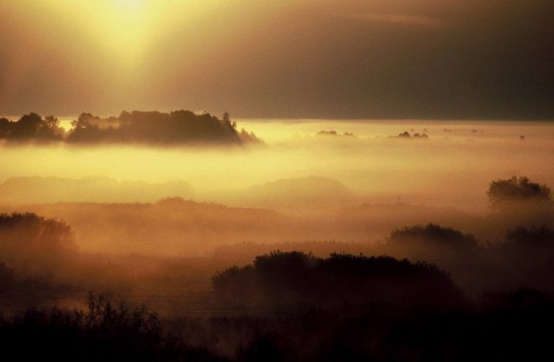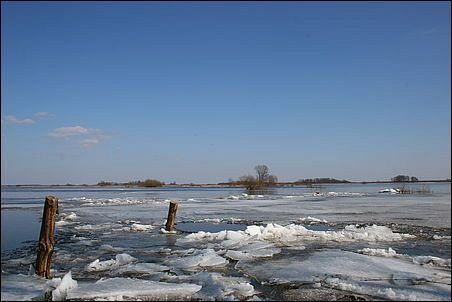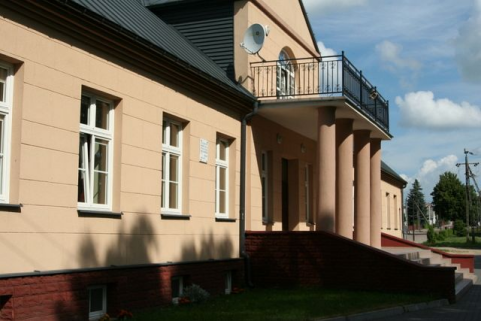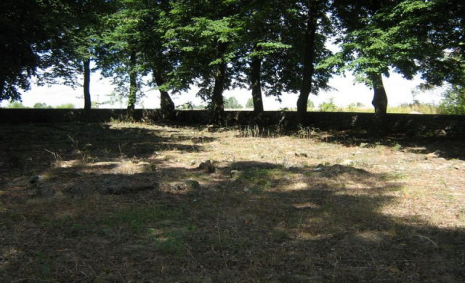Jedwabne-Podlaskie 作者: 来源: 发布时间:2021-10-22
Ⅰ. Population and Area
Population (2006)
• Total 1,901
• Density 170/km2 (430/sq mi)
Area
• Total 11.47 km2 (4.43 sq mi)
Website http://www.jedwabne.pl/

Ⅱ.Natural Geography (environment and resources)
-The Jedwabne commune is mainly an area of agricultural production. Arable land and grassland cover 76.9% of the commune's area. The quality of the soil is good and its suitability for organic farming is moderate. The share of agricultural land in class III and IV soils is 48.5%. The advantage is that of weak agricultural complexes suitable for agricultural production of lower intensity. The above factors characterize the area of production space as moderately good. Forests cover approx. 16.16% of the commune's area and are fairly evenly distributed, with a slight advantage in the central and southern parts of the commune.
The total area of the commune - 15 942 ha/ including the city 1 147 ha /
Agricultural land - 12 531 ha
- Arable land - 9 436 ha
- Sady - 37 ha
- Meadows - 832 ha
- Pasture
land - 1 999 ha - Built-up arable land - 209 ha
- Ponds, ditches - 27 ha
Forests and wooded land - 2 688 ha
- Forests - 2 577 ha - Wooded land111 ha
Built-up and urbanized land - 532 ha
- Built-up and urbanized areas - 98ha
- Communication areas - 400 ha - Lands fossil - 34 ha.
Land under water - 29 ha.
Wastelands - 160 ha.
Various areas - 2 ha
-The Jedwabne commune is located in the western part of the Podlaskie Province, in the north-eastern part of the Łomża County. It is one of the 9 communes of this poviat. It neighbors the following communes: to the north - Przytuły and Radziłów, to the east - Trzcianne, to the south - Wizna and Pątnica, and to the west - Piątnica and Stawiski.
-In terms of physical and geographical division, the area of the commune is located within the boundaries of the Kolneńska Upland mesoregion and the Biebrza Valley, which are part of the North Podlasie Lowland macroregion.
-The commune consists of 48 villages. The largest of them are: Orlikowo, Karwowo, Mocarz, Kucze Wielkie, Kotowo-Plac, Pluty and Bronaki-Pietrasze. The city of Jedwabne has 28 streets.
-The commune is situated in the area of the Green Lungs of Poland.
-Transport
-Jedwabne – Airports nearby Olsztyn-Mazury Airport (58.0 miles / 93.3 kilometers) Hrodna Airport (75.4 miles / 121.3 kilometers) Warsaw Modlin Airport (89.9 miles / 144.7 kilometers) Warsaw Chopin Airport (95.6 miles / 153.8 kilometers) Olsztyn-Mazury Airport
Ⅲ.Economy
-Jedwabne is the administrative and economic centre for the surrounding gmina, which has an agricultural character. It offers educational and healthcare services for the community, as well as administrative support, business infrastructure, and investment financing. The town is flanked by the Biebrza National Park, the biggest complex of natural marshes in Central Europe; it is inhabited by moose as well as other animals and bird species, attracting numerous tourists. The Biebrza river nearby is surrounded by campgrounds for fishing, hiking, and mountain biking. Agrotourism substantially contributes to the local economy, with prolonged tourist season beginning on March 1 and lasting until October 30 each year. https://en.wikipedia.org/wiki/Jedwabne#Economy
Ⅳ.Industrial Characteristics
-1. Co-financing in the amount of PLN 124,910.66 for the creation of the Social Integration Club in Jedwabne.
-The funds come from the Regional Operational Program of the Podlaskie Voivodeship. The previously unused rooms on the first floor of the Municipal Office in Jedwabne will be renovated. The value of the entire investment is PLN 178,484.82. The project was submitted under the LAG "Biebrzański Dar Natury".
-Jedwabne commune http://www.jedwabne.pl/index.php?k=92
-2. Co-financing for the purchase of remote learning equipment with necessary accessories from the "Remote School +" program in the amount of PLN 54,400.00 .
-The funds come from the European Regional Development Fund under the Operational Program Digital Poland 2014 - 2020.
-Jedwabne commune http://www.jedwabne.pl/index.php?k=92
-3. Reconstruction of the commune road in Konopki Tłuste on three interconnected sections with a total length of 678.92 m.
- The entire investment will amount to PLN 573,015.23, of which 70% is co-financed from the Local Government Roads Fund.
-Jedwabne commune http://www.jedwabne.pl/index.php?k=92
Ⅴ.Attrations and Cityscape

-Characteristics of tourism in the City and Commune of Jedwabne
-The greatest tourist asset of the Jedwabne commune is the location of the Biebrza National Park. The border of the park and the commune is the Biebrza River, also known as the Bobra. There are five villages in the lagging of the park, in the sequence from the lower reaches of the river: Pluty, Brzostowo, Mocarz, Szostaki and Burzyn. The specificity of the park is its marshy and meadow character, it is enough to note that the total area of the Biebrza Basin covers an area of over 2,000 km2, of which swamps and peat bogs occupy about 100,000. ha and are the largest primary area of this type in Central Europe. The main purpose of establishing the park is to protect the species diversity of plants and animals in swamp ecosystems, where the flora associated with natural swamp and water ecosystems has been preserved to a large extent. Water vegetation groups are of particular value, rushes and peat bogs, which disappeared in other parts of Europe as a result of drainage works. The Biebrza Valley also remained the mainstay of a rich animal world. There are, among others, elk, beaver, wolf, raccoon dog, fox, badger, otter, muskrat, etc. Swamps are also the most important breeding area in Poland and Europe for many bird species (246 species, including 186 breeding ones, have been found in the park). Out of 54 species classified in Europe as endangered or endangered in their existence, as many as 21 nest on the Biebrza River. The marshes are also the most important breeding area in Poland and Europe for many bird species (246 species, including 186 breeding ones, are found in the park). Out of 54 species classified in Europe as endangered or endangered in their existence, as many as 21 nest on the Biebrza River. The marshes are also the most important breeding area in Poland and Europe for many bird species (246 species, including 186 breeding ones, are found in the park). Out of 54 species classified in Europe as endangered or endangered in their existence, as many as 21 nest on the Biebrza River.
-The dominant form of tourism is agritourism, however, in the towns along the Biebrza River, there are also campsites used not only by domestic tourists, but also by foreign organized groups (e.g. rallies in the Biebrza National Park). Tourists who love the local area especially buy small plots of land on which summer houses are built. There are also canoe trips on the constantly meandering river. Biebrza is a paradise for anglers and the sight of an ornithologist with a camera slowly becomes an inseparable element of the local color.
-The tourist season lasts from March 1 to October 30, but individual agritourism farms are very flexible in this respect. The period of particularly intense tourist traffic is the late spring and summer period.
-THE BIEBRZA RIVER
-The Biebrza River is the reason why our areas are visited by a more and more numerous group of tourists both from Poland and abroad.
-Brief characteristics of the river
-The Biebrza River flows from the Sokólskie Hills, small, rather steep hills stretching right on the eastern border of Poland. In the area of the hills, the river flows north, then turns west and flows into its ice-marginal valley - the Biebrza Basin. Gradually, it begins to take the southern direction to connect with the Narew River near the town of Wizna. The total length of the main Biebrza riverbed is over 160 km with a total slope slightly exceeding 60 m - it is a typically lowland river with numerous meanders and oxbow lakes. The speed of the current is strongly related to the water level and the degree of development of water vegetation - according to the guide, it is on average 0.3 - 0.7 km / h, and on the Osowiec-Brzostowo section 0.8 - 1.2 km / h. The depth of the mainstream varies from several dozen centimeters in the upper reaches to 2 m, and 4 -6 m in the vicinity of Burzyna.
-HISTORICAL OBJECTS AND AREAS OF SILK CITIES AND COMMUNES
-There are historic buildings and areas in the city of Jedwabne that testify to the city's identity. According to the list of the Provincial Branch of the Monuments Protection Service in Białystok - Delegation in Łomża, they were entered into the register of monuments of the Podlaskie Voivodeship. Particularly noteworthy:
-1. The manor and park complex and the manor house itself, which was rebuilt after World War II

-2. The complex of the parish church of St. James the Apostle, including:
-- church, wall from 1926-1935。
-- presbytery, wall from the end of the 19th century.
-3. Roman Catholic cemetery (within its area there is a German Evangelical cemetery from the First World War).

-In the village of Burzyn there is a church with a historic cemetery, which was entered in the register of "A" class monuments. The historic layout of rural buildings has also been preserved, which is protected due to its unique value. Moreover, in the place called "Bethlehem" there is a landscape point from which you can admire the beauty of the Biebrza valley.
-On July 10, 2001, the unveiling of the monument commemorating the murder of Jews in 1941 took place in Jedwabne, and on May 3, 2003, the Monument to the Siberians was unveiled.
Ⅵ.History and Culture
-First mentioned in 1455 records, on 17 July 1736 Jedwabne received city rights from Poland's King August III, including the privilege of holding weekly Sunday markets and five country fairs a year. A wooden Catholic church with two steeples was built in 1737–1738, and a synagogue around 1770. The Jedwabne synagogue was a fine example of the unique Polish Jewish architectural tradition of wooden synagogues.
-At the end of the 18th century, new textile factories opened. In 1851 there were as many as 17 weaving establishments employing 36 workers in the town. In terms of its cloth production, Jedwabne was already the eleventh-largest manufacturing centre in the Kingdom of Poland. By 1862, 11 mechanical and 13 manual weaving machines had been installed at Jedwabne. The town's cloth production fell into decline only after the January Uprising of 1863, due to Russian repression against Polish and Jewish entrepreneurs. The town was the center of a large Jewish community with a population in 1900 of 1,941. Soviet occupation
-Following the Soviet invasion of eastern Poland in World War II in fulfillment of the Molotov–Ribbentrop Pact, between 1939 and 1941 the Soviet NKVD conducted anti-Polish repression. It was preceded by a successful Soviet attack against a Polish partisan unit stationed in the Kobielne Wilderness. In 1940 the town had 3,985 residents: 3,670 Poles, 250 Jews, and 65 Belarusians. The NKVD arrested a number of Poles and their families and deported them to Siberia. The NKVD arrested and killed Parson Ryszard Marian Szumowski.
-German occupation
-Jedwabne pogrom
-Main article: Jedwabne pogrom
-In September 1939 following the Invasion of Poland, Jedwabne was briefly occupied by German troops who deported some 300 men to labor camps prior to transferring the area to the Soviets. On 23 June 1941, as part of Operation Barbarossa, German troops reoccupied Jedwabne. Jewish refugees from Wizna and Radziłów, where on 7 July Jews were burned alive in a barn, took refuge in Jedwabne.
-Memorial in Jedwabne
-On 10 July 1941, the town's Jews were forced to assemble in the town square; the Germans played a passive role in the subsequent violence. A group of Polish men humiliated and killed some of the assembled Jews. Some 50 to 70 Jews were forced to tear down the statue of Lenin and place the pieces in a barn, after which they were beaten to death. The Polish men then marched the rest of the Jews into the barn and set it alight. Casualty estimates vary; a controversial forensic investigation in 2002 set the number at 300 to 400 dead, while other estimates range as high as 2,000. Accounts differ as well as to the number of survivors of the massacre (between 125 and 302). Some 12 of the Polish perpetrators were convicted in 1949, receiving prison sentences of eight to fifteen years.
-Following the massacre, some of the surviving Jews were interned in the Jedwabne ghetto; one to three months later, the ghetto was dissolved and the inmates expelled to the Łomża Ghetto. From there, on 2 November 1942, they were transferred to the Zambrów transit camp; and from there, in January 1943, to the Auschwitz extermination camp. Some Jedwabne Jews managed to flee the ghetto liquidations, and some of them survived the war.
-In the early 20th century, many Jedwabne residents had emigrated to the United States. Landing and settling in New York City, they built the synagogue Congregation Anshe Yedwabne at 242 Henry Street in the Lower East Side.
Ⅶ.Other Information
-Jedwabne is a town in northeast Poland, in Łomża County of Podlaskie Voivodeship, with 1,942 inhabitants (2002). It is notable for the Jedwabne pogrom of 10 July 1941, during the World War II German occupation of Poland.
Ⅷ.Contact Information
Mayor Marek Mazewski
Tel:(086) 217 20 40
E-mail:burmistrz@jedwabne.pl
